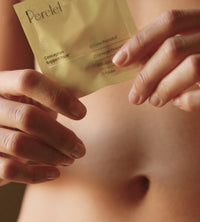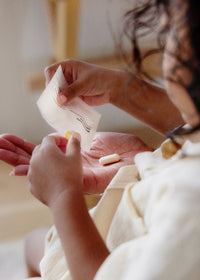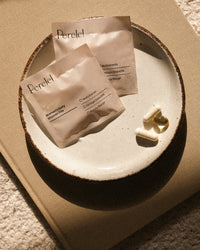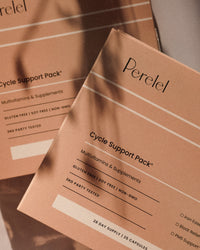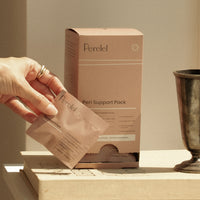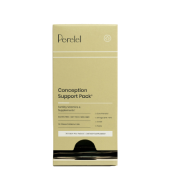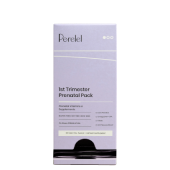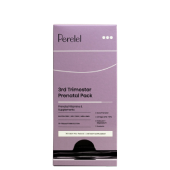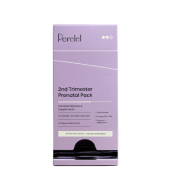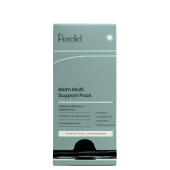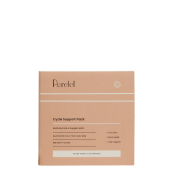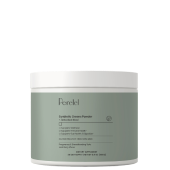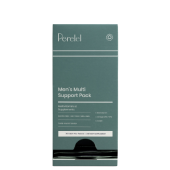If the body had a bumper sticker it might read: It’s all connected, baby. As women, we often see this in the way that our menstrual cycle impacts so many aspects of our well-being, from our energy levels and our mood to our skin.
After all, if the body is a finely tuned orchestra of different systems working together, consider your hormones to be the conductors. Our skin is a particularly great example: The glands that control the oil production of our largest organ are actually controlled by reproductive hormones. That might help explain why many of us are prone to breakouts just before our periods, or why some of us might navigate more chronic hormonal acne—it’s all a result of shifting hormones. The question is whether there might be an underlying imbalance exacerbating your symptoms and side effects.
To better understand exactly how our cycle has an impact on our complexion, we caught up with Dr. Caitlin O’Connor, a naturopathic doctor who specializes in holistic treatment for women. Read on for the rundown.
How can your menstrual cycle affect your skin?
First, some skin basics. Many of the skin changes you may experience around puberty and later in life are due to small glands called sebaceous glands. These sebaceous glands produce and secrete an oily substance called sebum.1
Sebaceous glands, like many other parts of the skin, have receptors which are influenced by sex hormones. These glands are affected most dramatically by androgens, which are male sex hormones like testosterone, but are present in both sexes. These androgens increase the production of sebum during puberty. When there are more androgens binding to the receptors on the sebaceous glands, more sebum is produced. This can lead to noticeably oilier skin, and may progress to acne if pores or hair follicles are clogged. (Acne is usually the result of an overproduction of sebum, dead skin cells, and bacteria that clog pores.)2
Androgen
Noun
A group of sex hormones that help start puberty and play a role in reproductive health and body development, including increased sebum production.
Let’s not forget about estrogen. Even though it is still unclear how much estrogen affects sebaceous glands, estrogen plays a prominent role in overall skin health. Estrogen is associated with increased collagen production, skin thickness, skin hydration, wound healing, and improved barrier function.2
Estrogen
Noun
A hormone that plays various roles in the body. In females, it helps develop and maintain both the reproductive system and female characteristics.
“As hormones shift throughout the ovulatory cycle, they can impact your skin based on the way hormones interact with the types of oils made by your skin as well as overall hydration,” Dr. O’Connor explains.
When are breakouts most likely?
“Breakouts can vary, but most people notice an increase in breakouts in the week or so before your menstrual cycle starts,” Dr. O’Connor suggests. This is because “hormone production overall increases after ovulation, so this is often when skin issues get worse.”
“Alternatively, some conditions—like PCOS, where androgens levels are higher—both suppress ovulation and worsen acne,” Dr. O’Connor suggests. We also can’t forget additional factors. “Stress levels can influence cortisol, which also seems to have a negative impact on skin health. Dysregulated blood sugar and insulin resistance also play a role.”
And if you noticed a change in your skin after starting hormonal birth control, that might be something worth flagging with your OB/GYN or dermatologist, too—some women see their skin clear up while taking oral contraceptives, but others might find themselves experiencing more breakouts or even cystic acne.
It’s also key to remember that your menstrual cycle isn’t the only example of hormonal fluctuations throughout your life: Many women experience breakouts during early pregnancy, for example, and it’s not uncommon to navigate skin changes during menopause, either.
How do I know if it’s hormonal acne or something else?
While every person’s complexion is different, hormonal acne often manifests along the chin and jawline, and can appear as cysts, whiteheads, or even blackheads.
Cysts are painful bumps that appear beneath the surface, and often last longer than other forms of acne. (While you should avoid popping any zits without professional help, cysts are a huge no-no, as picking these can cause infections or acne scars.) Whiteheads appear as oil-clogged pimples above the surface, while blackheads manifest as pinprick dark clogs in your pores.
If you’re experiencing mild breakouts at a certain time of the month, there’s a good chance that your menstrual cycle is the culprit. But if you’re navigating consistent, cystic adult acne throughout your face, your best bet is to consult with a dermatologist to get to the bottom of any underlying imbalances or conditions that might be at play.
SOS—What can we do to save our skin (and hormones!) at home?
“Hydration and a good skincare routine are key. Supporting your body’s ability to metabolize hormones through good digestion, managing stress, and getting adequate sleep are really important as well. On the nutrient side of things; being mindful of simple sugars and industrial oils; getting healthy fats like fish and olive oil; eating a good spectrum of plant foods for prebiotic fibers; and for some folks decreasing or eliminating dairy will all support hormone metabolism,” Dr. O’Connor says.
“Hydration and a good skincare routine are key,” says Dr. O’Connor. “Supporting your body’s ability to metabolize hormones through good digestion, managing stress, and getting adequate sleep are really important as well. On the nutrient side of things; being mindful of simple sugars and industrial oils; getting enough healthy fats like fish and olive oil; eating a good spectrum of plant foods for prebiotic fibers; and for some folks, decreasing or eliminating dairy will all support hormone metabolism.”
While hormonal acne is often unavoidable, building a routine that supports your hormones is a great way to balance your skin from the inside out:
- Hydrate, hydrate, hydrate. We probably don’t need to harp on the idea that drinking enough water is crucial for foundational health—supporting everything from smooth digestion to better sleep. But let’s double-click on water’s relationship with your hormones and your complexion—because again, it’s all connected! Studies show that even mild dehydration is enough to increase levels of cortisol, the body’s stress hormone—which can cause overproduction of sebum. (Hello, stress breakouts.) Research also suggests that drinking enough water can contribute to better skin performance and appearance. 3,4
- Zero in on your skincare routine. No need to overthink it: Start with a trusty cleanser that gently helps slough away grime and dead skin cells, and follow with a no-frills moisturizer to help keep your moisture barrier balanced. In moderation, products with salicylic acid can serve as a more direct acne treatment. If you’re aiming for something that can resurface acne scars and fine lines in one go, you might opt for retinoids (under the supervision of a skincare professional, of course). Our main piece of advice? Opt for skincare products with dermatologist-approved ingredients, and without irritants like synthetic fragrance, which can exacerbate or even cause acne.
- Clean up your digestion. Your skin and your gut health? You guessed it—completely related. Research shows that taking a quality probiotic can have a positive impact on your complexion—decreasing moisture loss and the appearance of fine lines, and improving skin elasticity. Why? Because when the gut microbiome is out of whack, it can contribute to inflammation throughout the body—including its largest organ, the skin.5
- Manage stress. As mentioned earlier, the stress hormone cortisol is often a culprit behind sebum overproduction—which is why we tend to see our skin act up when we’re feeling anxious. Removing major stressors in our lives isn’t always possible—like a busy work season, or navigating the postpartum haze. But there are simple ways to mitigate cortisol levels, like moving your body regularly, staying hydrated, and clocking consistent sleep. (More on that in a second.)
- Get adequate sleep. We know, we know—often easier said than done. But aiming for 7-9 hours every night is a great way to keep hormones balanced. (Pro tip: Prioritize more sleep during your luteal phase, the days leading up to your period.)
- Cut added sugars and hydrogenated oils. These dietary culprits can lead to stress on the body and breakouts.
- Add healthy fats and prebiotic fibers, instead. When we prioritize foods that stabilize blood sugar levels and contribute to smoother digestion, we’re better supporting our hormonal balance. (Check out specific hormone-balancing foods here.)
- Consider decreasing or eliminating dairy. While research is limited, some studies suggest that dairy contributes to high estrogen serum levels—and that’s not to mention that up to 68 percent of adults globally have some form of lactose intolerance. We’ve already gone over the connection between poor digestion and your skin—so if you’re sensitive to lactose, it may be best to opt for some non-dairy alternatives.6
- Get additional support from supplements. By now, it should be clear that supporting your overall health is a great way to support healthy skin—and keep symptoms like hormonal acne in check. Our Daily Women’s Vitamin Trio includes a daily multivitamin, an omega-3 supplement, and a Beauty Blend capsule with collagen and biotin—a trifecta for daily nutrition, reproductive support, and feeling balanced from the inside out. For those navigating symptoms like irregular cycles, our Hormonal Balance Support was formulated to help balance hormones.
- Know when to see a professional. If you’re experiencing consistently severe acne, it’s best to consult with a dermatologist to better understand any underlying causes or conditions.
Are you dealing with hormonal breakouts? Any other questions for our experts? Connect with us on social so we can cover the topics that matter most to you.
Shop the Article:
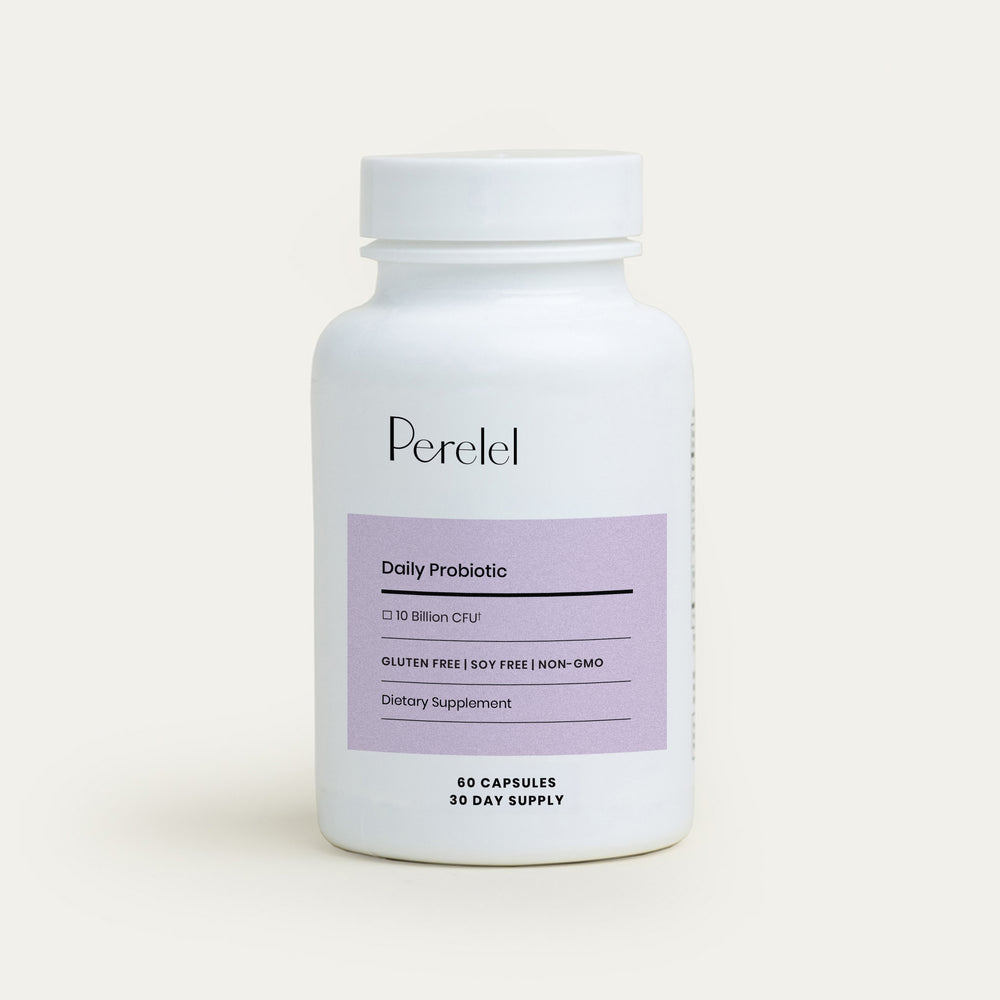
Daily Probiotic
$26.95
/ Month
- Supports gut and vaginal health*
- Supports a healthy immune system*
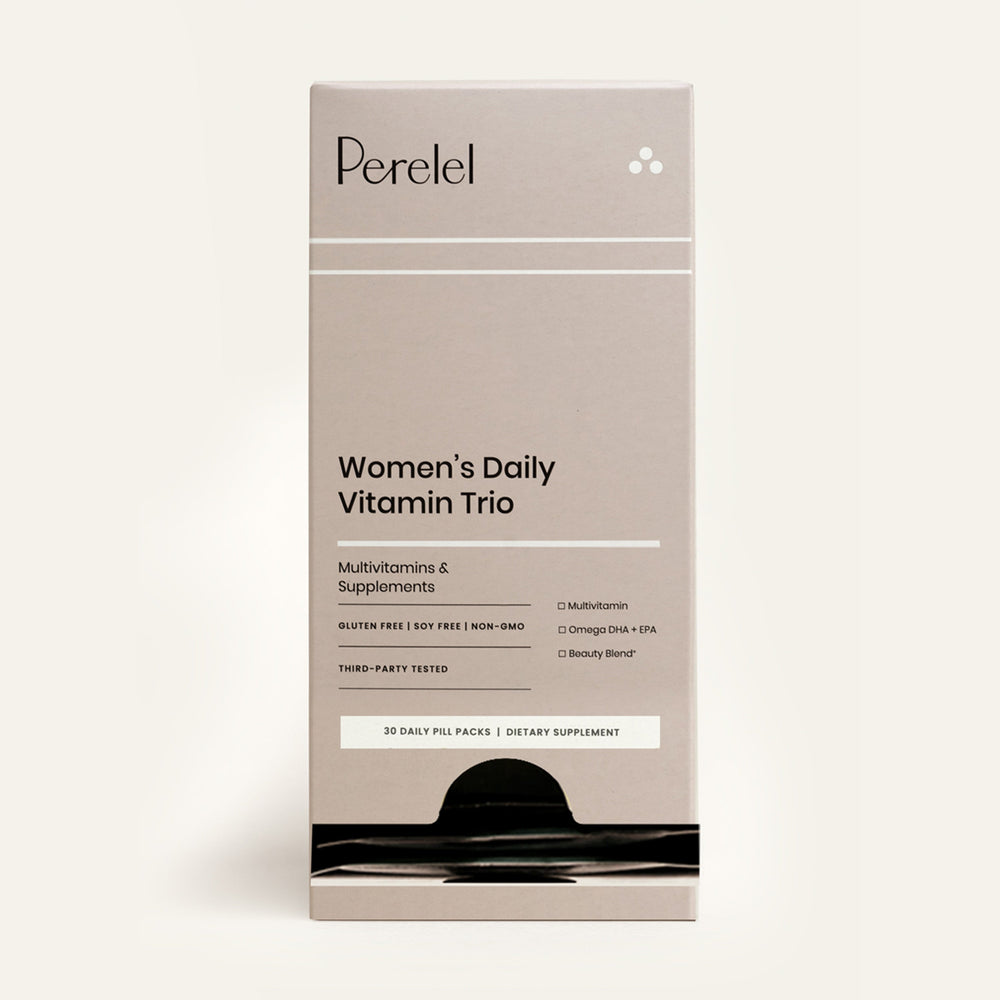
Women’s Daily Vitamin Trio
$39.95
/ Month
- Supports general health, immunity and mood*
- Supports skin and nail health*
- Clinically-Proven
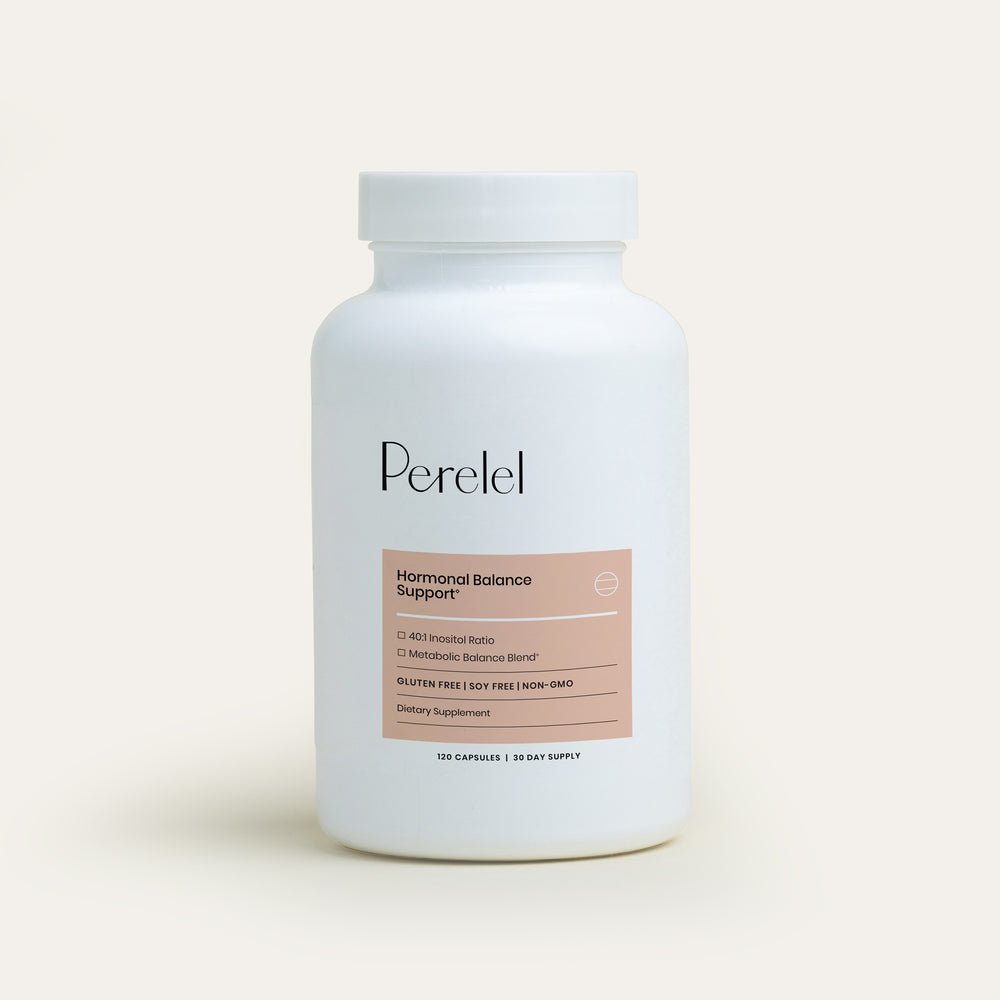
Hormonal Balance Support*
$46.95
/ Month
- Promotes healthy ovulation*
- Promotes regular menstrual cycles*
1 Jacobsen E, Billings JK, Frantz RA, Kinney CK, Stewart ME, Downing DT. Age-related changes in sebaceous wax ester secretion rates in men and women. J Invest Dermatol. 1985;85(5):483-5.
2 Nicole Telfer, Clue. Skin and the cycle: how hormones affect your skin. 2014.
3 Castro-Sepulveda, M., Ramirez-Campillo, R., Abad-Colil, F., Monje, C., Peñailillo, L., Cancino, J., & Zbinden-Foncea, H. (2018). Basal mild dehydration increase salivary cortisol after a friendly match in young elite soccer players. Frontiers in Physiology, 9. https://doi.org/10.3389/fphys.2018.01347
4 Palma L, Marques LT, Bujan J, Rodrigues LM. Dietary water affects human skin hydration and biomechanics. Clin Cosmet Investig Dermatol. 2015 Aug 3;8:413-21. doi: 10.2147/CCID.S86822. PMID: 26345226; PMCID: PMC4529263.
5 Gao T, Wang X, Li Y, Ren F. The Role of Probiotics in Skin Health and Related Gut-Skin Axis: A Review. Nutrients. 2023 Jul 13;15(14):3123. doi: 10.3390/nu15143123. PMID: 37513540; PMCID: PMC10385652.
6 Malekinejad H, Rezabakhsh A. Hormones in Dairy Foods and Their Impact on Public Health - A Narrative Review Article. Iran J Public Health. 2015 Jun;44(6):742-58. PMID: 26258087; PMCID: PMC4524299.
This article is for informational purposes only. It is not, nor is it intended to be, a substitute for professional medical advice, diagnosis, or treatment and we recommend that you always consult with your healthcare provider. To the extent that this article features the advice of physicians or medical practitioners, the views expressed are the views of the cited expert and do not necessarily represent the views of Perelel.
Written by Jessica Lopez. Jessica Lopez is a freelance writer, digital content creator, and new mother. She has covered all lifestyle topics ranging from bridal to beauty for publications including Brides Magazine, Byrdie, THE/THIRTY, and more. Walking wide-eyed into motherhood has inspired her to connect with other parents through her writing and shared experience. You can follow more of her journey @Jessica.H.Lopez.




